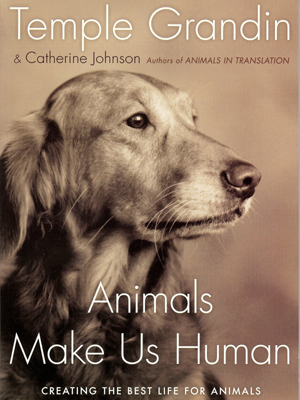 |
Animals Make Us Human: Creating the Best Life for Animalsby Dr. Temple Grandin and Catherine Johnson
Houghton-Mifflin Harcourt, New York, NY, 2009 (In United Kingdom, book title is "Making Animals Happy" and ISBN is: 978-0-7475-9714-8) Links for ordering: |
